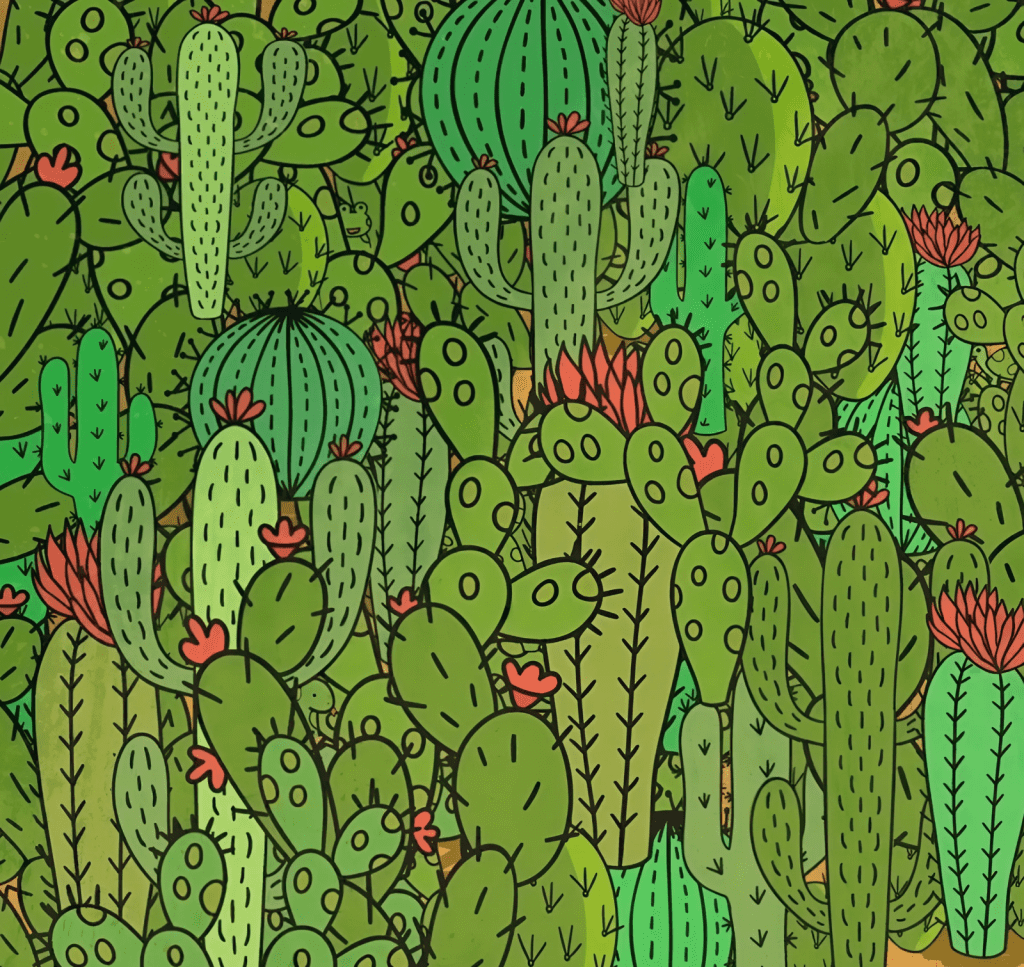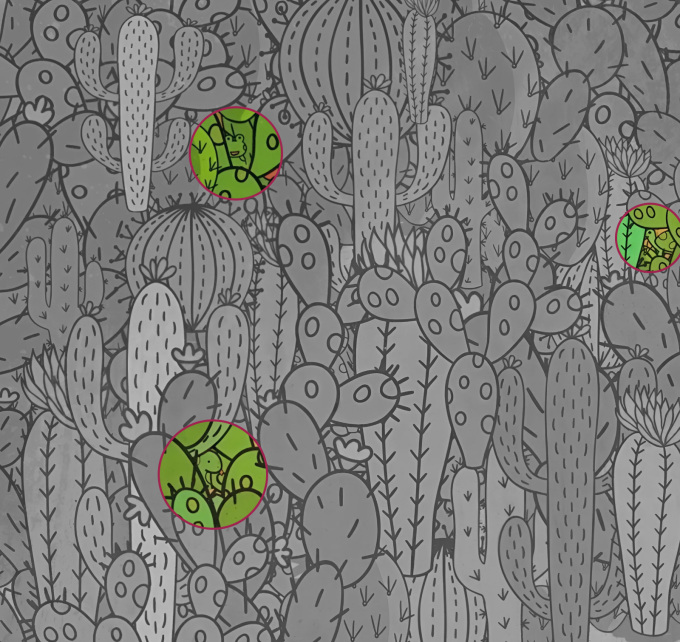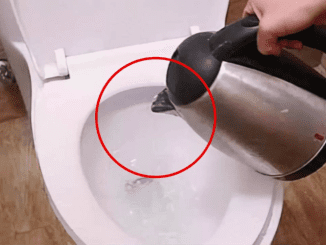Optical puzzles are a delightful way to challenge our brains, and today’s task is no exception. In this intricate illustration of vibrant cacti, three animals are cleverly camouflaged. It’s not just a game—it’s a workout for your eyes and mind. Can you spot the snake, frog, and turtle hidden in the scene? Let’s dive in and see if you’ve got the observational skills to uncover them!
Why Visual Puzzles Are So Addictive

There’s something undeniably captivating about puzzles that challenge us to spot hidden objects. They’re more than just entertainment—they’re a test of patience, focus, and creativity. But why do these puzzles grip us so tightly?
- They Trick the Brain: Our minds are wired to see patterns and predict outcomes. When a puzzle throws us off, it’s both frustrating and intriguing.
- The Joy of Discovery: Finding hidden elements brings a rush of satisfaction—it’s like solving a tiny mystery.
- Mental Stimulation: These puzzles enhance cognitive skills, encouraging us to think critically and notice subtle details.
Now that we understand why we love these challenges, let’s tackle today’s brain teaser.
Common Pitfalls When Looking for Hidden Animals
Before we dive in, let’s talk about some traps people often fall into while solving puzzles like this one. Avoiding these mistakes can help you spot the animals faster.
- Rushing Through: Many people skim the image quickly, missing important details. Patience is key.
- Focusing on Obvious Shapes: Don’t expect the animals to be fully outlined. They might be partial shapes or blend seamlessly with the background.
- Ignoring the Edges: People often focus on the center of the image, overlooking crucial details near the edges.
Step-by-Step Guide: Spotting the Hidden Animals
Ready to put your detective skills to the test? Follow these steps to uncover the snake, frog, and turtle in the puzzle.
1. Start with the Snake
Snakes are masters of disguise, and this puzzle takes full advantage of their slithering forms. Look for long, curved lines that mimic the natural flow of a snake’s body. In this image, the snake’s head is slightly rounded and its body weaves through the cactus spines. It’s likely hiding in a denser area of the cacti, blending in with their patterns.
2. Move on to the Frog
Frogs can be tricky to spot due to their compact size and ability to mimic surrounding textures. Look for a rounded body with slightly spread limbs. In this puzzle, the frog is positioned near the base of a cactus, its legs cleverly disguised as spines or shadows. Focus on areas where cacti overlap or create darker spaces.
3. Find the Turtle
The turtle might be the toughest to locate because its shell looks like a cactus pad. The key is to search for a rounded, bumpy surface that seems slightly different from the spiny cactus patterns. Its head and legs might protrude subtly, giving away its identity. Check the lower sections of the image for a cluster of shapes that don’t quite match the surrounding cacti.

The Science Behind Optical Illusions
Why do puzzles like this one stump us so often? The answer lies in how our brains process visual information.
- Pattern Recognition: Our brains are excellent at identifying familiar shapes but can be fooled when patterns overlap or mimic each other.
- Selective Attention: We tend to focus on what seems most prominent, which can cause us to miss subtle details.
- Visual Memory: The illusion relies on how our brains retain and interpret images, creating connections where none exist.
This interplay of visual processing and cognitive tricks is what makes puzzles like this so engaging—and so satisfying to solve.
Why Puzzles Are Good for Your Brain
Beyond the fun, puzzles offer numerous cognitive benefits. They:
- Sharpen Focus: Solving puzzles requires undivided attention, improving concentration.
- Enhance Problem-Solving Skills: You learn to approach problems creatively and think outside the box.
- Boost Memory: Engaging with puzzles trains your brain to retain and recall details more effectively.
Whether you’re solving a brain teaser or tackling a real-life problem, these skills can give you an edge.
Did You Spot All Three Animals?
Now that you’ve had a chance to analyze the puzzle, let’s recap:
- Snake: Likely intertwined with the cacti, its curving body blending into the spiny patterns.
- Frog: Hidden near the base of a cactus, its small limbs and rounded shape mimicking the surrounding textures.
- Turtle: Nestled among the cacti, its shell camouflaged as a cactus pad with subtle protrusions marking its head and legs.
Did you manage to find them all? If so, congratulations—you’ve got a keen eye! If not, don’t worry. Puzzles like this are meant to challenge and improve your observational skills over time.
The Joy of Visual Challenges
There’s something magical about discovering hidden elements in a seemingly simple image. It’s not just about the thrill of solving—it’s about training your brain to see the world differently. Each puzzle you attempt sharpens your ability to notice details, think critically, and approach problems creatively.
Conclusion: Keep Testing Your Skills
Did this puzzle stump you or make you feel like a visual genius? Either way, you’ve just given your brain a fantastic workout. Challenges like this are a reminder that things aren’t always what they seem and that a little patience goes a long way.
Ready for your next adventure? Keep exploring optical illusions and puzzles—you never know what surprises are waiting to be found. Happy puzzling!


